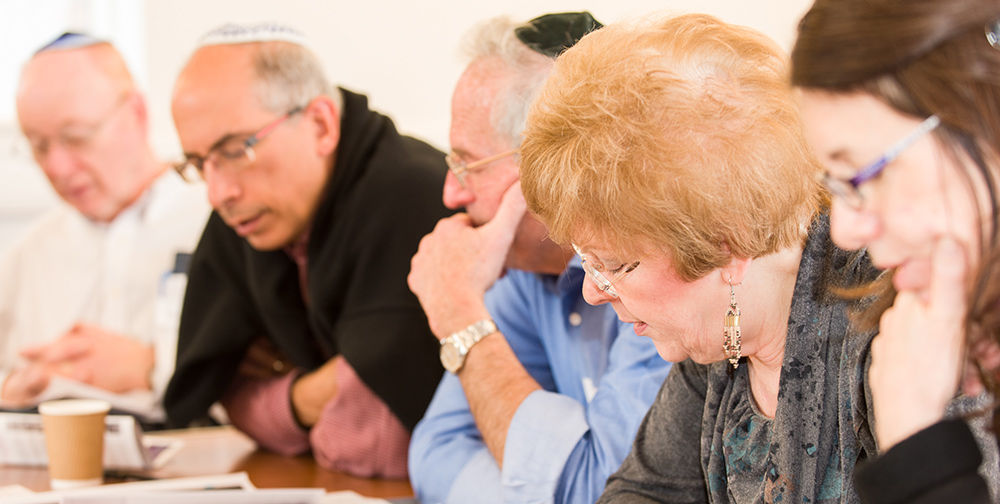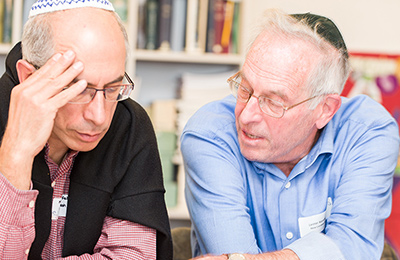The Halachic System

1) The halachic system is based on 2 axioms.
- Two Torahs were given to Moses on Sinai. Together with the written Torah there was an Oral Law which explained how the rules of the Torah were to be practiced in real life. The Oral Law was first transmitted orally, and then grew and developed organically over hundreds of years as the sages of Israel debated and discussed issues and made decisions on a multitude of problems. It was eventually written down an various forms including theHalachicMidrashimand various individual and collections of Braitot. The most important statement of the Oral law was the Mishnah.
- The Mishnah (and the other collections of the Oral Law) are mainly made up of cases. The Halachic system assumes that there is such a thing as Jewish Law in the abstract sense – i.e a set of principles of which are manifest in the cases brought in the Oral Torah. There is an assumption that there is harmony amongst the various sources of the Oral Law – that the same principles underpin the various teachings of the Rabbis.
2) To a large extent the subject matter of ‘Talmud Torah’, from the time of the editing of the Mishnah onwards, is the attempt to uncover the underlying principles of the jurisprudence. This is done by closely analysing the cases brought in the various sources of the Oral Torah and by comparing different cases to each other. It is not unusual for cases to appear to contradict each other. Because of axiom 2 quoted above, it is assumed that the cases do not actually contradict, but rather, by identifying the different sets of circumstances they are referring to, a better understanding of the underlying principles can be reached.
3) The work of defining the principles of the Oral law is the main concern of the Talmud. The Talmud analyses the cases brought in the Mishnah, and compares them to other traditions. It also brings other traditions, cases and Halachic rulings of the Amoraim, and as such is a core text of Halachic authority in and of itself. The Babylonian Talmud istheprimary text of the Halachic tradition.
4) Although the Talmud initiates the work of identifying the principles of Jewish Law, this endeavour reached a more sophisticated level at the time of the Rishonim. These Rabbis carefully analysed the entire body of Rabbinic teaching that was known to them, particularly the Babylonian Talmud, with the express goal of identifying underlying principles. The Rishonim turned the Talmud into a comprehensive system of law. They did this by proposing a series of principles through their commentaries, which were regularly reviewed by both their peers and subsequent generations of Rabbinic scholars. This literature serves as the foundation of Jewish legal discourse to this day.
5) By the end of the period of the Rishonim, the main work of analysing the Talmud had reached a very advanced stage. However, as the sources of halacha are cases rather then principles, the suggested principles are never more than hypotheses – i.e the best explanation for the cases that has been suggested at a given time. There are frequently disagreements among the Rishonim about what the principles are – or how they are applied in different cases. The main work of the Achronim is to bring the different opinions of the Rishonim together, and to determine which of these opinions is the actual law. The difference between a Rishon and an Acharon can be demonstrated by contrasting Maimonides’ (a Rishon) code of law, the Mishnah Torah, to Joseph Caro’s (an Acharon) code of Law – the Shulchan Aruch. In the Mishnah Torah, Maimonides goes through the corpus of Jewish Law and in each case records he own opinion as to what the law should be. In theShulchan Aruch [and more extensively in the Bet Yoseph], Joseph Caro compares the rulings several Rishonim to each other, and through applying various decision making criteria, determines which opinion we should follow. This is the typical work of the Achronim.
6) It is possible to demonstrate the different stages of the halachic process in my post about vegetarian cheese. The statement in the Mishnah that cheese needs to be produced by Jews is a primary statement of the Oral Law. The interpretation that the reason for this is rennet, put forward by Maimonides, is a hypothesis of a Rishon. The ruling of the sages of Narbonne that the cheese in their area did not need to be produced by Jews because it was made with flowers is a further hypothesis. In principle, the theories of the Rishonim that explain the primary sources and have passed the peer review of the Rabbis, are all potentially acceptable rulings of Jewish Law.
The statement that both Maimonides and Joseph Caro required cheeses to be made by Jews, and did not codify the ruling of the sages of Narbonne in their codes, and that therefore we rule that cheese needs to be made by Jews – is a typical decision making principle of the of the Achronim. In the post on ‘Heating and Reheating’ – I presented different opinions of the Rishonim on heating liquids. I followed this with the statement that ‘Whenever there is a difference of opinion among the main halachic authorities concerning a Torah Law (as in this case) the stricter view is adopted.’ Once again – this is a decision making principle of theAchronim– and explains how we move from the analysis of principles of theRishonim– to the rulings of Jewish law we follow today.
7) There is another stage to the development of Jewish law – which hasn’t been reflected so far in this analysis. At the end of the day, there are frequently multiple rulings and Halachic possibilities available. The process through which a consensus is reached about Halachic process is a social process which depends of he community (or communities) of observant Jews. Some rulings ‘capture the imagination’ of religious observers – and end up becoming accepted practice. Others fall into oblivion.
An actual Possek, making a Halachic decision takes many factors into consideration. In addition to the actual letter of the law – the current situation, the motivations of people, the needs of different players and of the wider community and the Jewish people in general are all important. This wider view is called ‘Da’at Torah’. Furthermore, once aPosekgives a decision, the community may accept or reject it. Many different factors influence this – the status and reputation of the Posek, the history of the community, internal politics and the sense of the religious community that thePesakfeels right. Various possible rulings compete within the observant community for acceptance, and a consensus only emerges over time.
There are many examples of this: early decisions on the use of electricity on Shabbat were lenient, and only over time was a consensus emerged that electricity is to be treated as fire. There are many different rulings on the kosher status of gelatine – a matter which is still evolving today.
Furthermore, sometimes an agreed consensus changes. The Chacham Tzvi ruled that visitors to Israel should only keep one day of Yom Tov. For many decades the consensus was that visitor should keep 2 days – but recently, one hears an increasing number of people quote the Hacham Tzvi. The establishment of the state of Israel, the growing tourist industry, the fact that many religious Jews visit Israel regularly and spend significant periods of time there, are all contributing to a new consensus.
8) Finally, there is always a certain amount of personal judgement that goes into any decision. The principle of ‘Lo Palug’ is never absolute. We are always making distinctions – between man and women, between Jews and non-Jews – between the holy and the profane. ‘Lo Palug’ says that we don’t make distinctions that are so fine that the law becomes unintelligible or confusing. This is a subjective decision. The Poskim who say that all cheeses need a hechsher – whether they contain rennet or not – fell that you can’t objectively distinguish between those cheeses that use rennet and those that don’t. The Rabbis who make this distinction feel that adding rennet or not is a very clear criterion – and isn’t confusing. If you allow the soft cheeses without a hechsher – it applies to all cheeses made without rennet – not only cottage or curd cheeses
9) Halachic decision making is complicated. It is more an art than a science. It is based on both law and life. One studying halacha needs a strong legal and textual grounding. One studying about halacha, needs in addition an understanding of sociology and evolutionary processes.
Rabbi Chaim Weiner
Tishre, 5771




